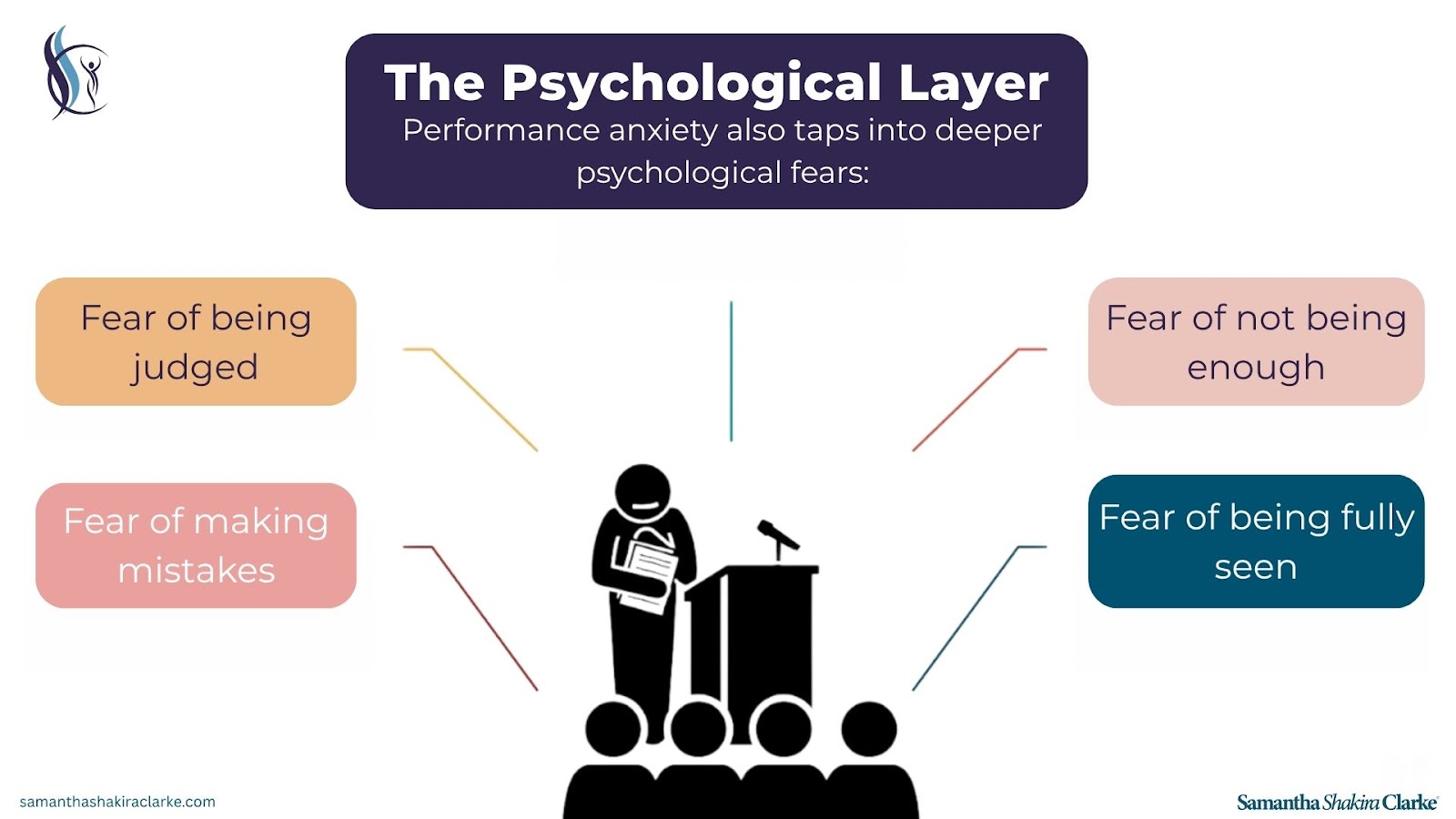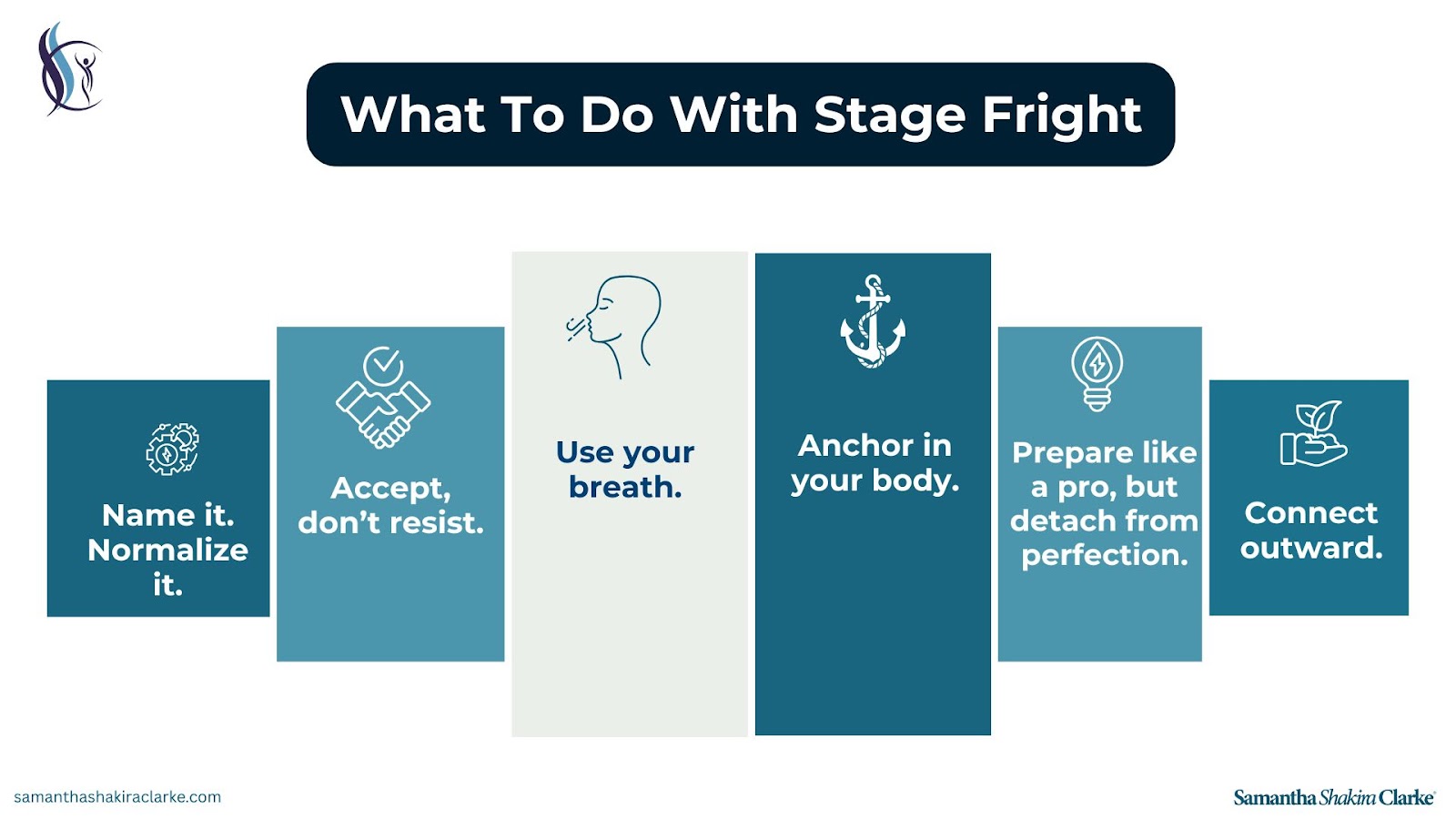 Book Now!
Book Now!For Leaders, Speakers, Performers (and Anyone with a Beating Heart.)
You’re backstage. Or about to click “Join Meeting.” Or standing in front of your team. Your heart is racing. Your hands are sweaty. Your voice is tight. And your brain? It’s staging a quiet rebellion.
Welcome to stage fright, also known as “performance anxiety,” “pre-game jitters,” or, more accurately, “your body trying to keep you alive.”
But here’s the thing:
Stage fright isn’t a flaw. It’s a feature.
And if you learn to understand it, instead of fearing it, it can truly become your greatest ally.
At its core, stage fright is your nervous system doing its job.
It’s a physiological response to perceived threat, except instead of a saber-toothed tiger, it’s a sea of eyeballs watching you speak, lead, or perform.
Your sympathetic nervous system (the part responsible for fight, flight, or freeze) activates, flooding your body with adrenaline. Heart rate increases. Breath gets shallow. Muscles tense. Your body is preparing you to run or fight, not deliver a TED talk or boardroom update.
But here’s the twist: Your body isn’t betraying you. It’s protecting you.
Your nervous system thinks you’re in danger, because being rejected or humiliated by the tribe once was a matter of survival.

Underneath it all, there’s often a quiet voice whispering, “What if I fail?” or “What if they don’t like me?”
Which, by the way, is very human. You’re not broken. You’re alive.
Let’s just take a moment to marvel:
Your body can sense change, detect risk, and prepare for action in milliseconds.
It can increase alertness, sharpen focus, and give you a jolt of energy when you need it most.
That flutter in your chest? That’s aliveness.
Those nerves? They mean you care.
That adrenaline? It’s fuel.

Here’s the reframe:
The goal isn’t to eliminate nerves. The goal is to work with them.
Say it out loud: “I’m feeling nervous. That’s okay.”
Labeling what’s happening calms the amygdala (the brain’s smoke alarm) and puts you back in the driver’s seat.
The more we try to push nerves away, the more they push back. Instead, get curious. What are they trying to tell you?
Nerves are often messengers pointing to something important: “This matters to me.” “I’m growing.” “I care.”
Breath is your remote control for the nervous system.
Try this: Inhale for 4. Hold for 2. Exhale for 6. Do it a few times. Let the exhale be slow. Long exhales help switch the body into parasympathetic (rest-and-digest) mode.
Wiggle your toes. Feel your feet. Press your hands together.
Bringing awareness back to the body grounds you in the present moment (instead of catastrophizing a future that hasn’t happened).
Confidence builds with reps. But perfectionism is a trap. Instead of aiming to be flawless, aim to be authentic, present, and connected. (That’s what people actually respond to.)
When nerves show up, we often spiral inward. Shift the spotlight.
Focus on who you’re serving. What do they need to hear? How can you make them feel seen, understood, or uplifted?
Your ability to regulate your nervous system doesn’t just impact you, it impacts everyone in the room.
When you ground yourself, you create safety for others.
You model calm. You model courage. You make space for imperfection, and growth.
Courage is feeling the fear, the flutter, the surge, and showing up anyway.
Stage fright doesn’t mean you’re not meant for this.
It means you’re alive, human, and on the edge of something that matters.
So the next time nerves arrive? Don’t shove them away.
Say: “Thanks for the signal. I’ve got this.”
Then breathe, anchor, and go do the damn thing!


